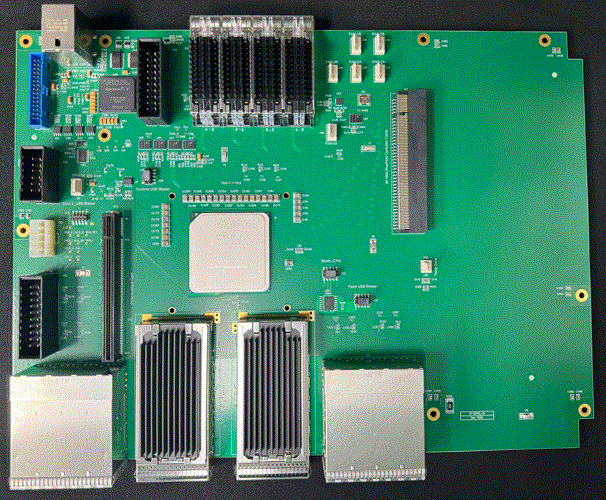Multilayer PCB
Company Information:
Name: |
Multilayer PCB |
Category: |
|
Offered by: |
|
Multilayer PCB Description:
A Multilayer PCB Core is coated with copper foil on both sides. Heat is used to cure and solidify it, making it more durable than prepreg. Prepreg, which is made of woven glass cloth and epoxy resin, is used as an isolating material between copper layers and cores.
Through-hole components have connections to all layers with their own through-hole plated pads, whereas surface-mounted components are connected through vias. In multilayer PCBs, there are three different types of vias that are utilized: Buried Vias, Blind Vias, and Through Hole Vias.
All these three types of connectivity services can provided by leading manufacturers like PCB Runner, which are established in the UK and Europe.
Significance of multilayer PCB in modern technology:
The capacity of multilayer PCBs to fit more components into a smaller area is one of their primary benefits. Designers can reduce the total size and weight of the PCB by more effectively distributing the circuitry by utilizing multiple layers. Particularly useful for small electrical devices like wearables, tablets, and smartphones.
In addition, multilayer PCBs provide better signal integrity than single-layer and double-layer models. In order to provide clear and reliable signal transmission, extra layers, as well as dedicated power and ground planes, aid in lowering noise and interference. For sensitive analog applications and high-speed digital circuits, multilayer PCBs are important. Depending on the design specifications and circuit complexity, a multilayer printed circuit board (PCB) may have one or more layers.
In complex analog designs, controlled impedance tracks are under special consideration to avoid cross-talk in the design. We at PCB Runner verified the functionality of providing the required technical data and carried out different tests to make the design successfull and fully functional.
Here are the manufacturing capabilities of PCB Runner which can help you in designing your next multilayer PCB:
|
Parameters |
Specifications |
|
Layers |
1-50 layer |
|
Board Material |
Rigid: FR4: KB6164, KB6167, S1000-2M, S1000H, TG150: KB6165 Rogers: R4350B, R4003C Metal Core: T111 AL Halogen: S1150G TG135:ShengyiS1141/ KB6160 (CTI175-249)Polymide: Thinflex PI, Panasonic PI
|
|
The impedance value and tolerance |
minimum 40+/-5% ohm & max 120ohm +/-10% |
|
Inner line width/ Line spacing (original) |
For Rigid: 1oz = minimum 3 mil& max no limited 2oz = minimum 6 mil 3oz = minimum 8.5 mil 4oz = minimum 11 mil 5oz = minimum 14 mil 6oz = minimum 18 mil
For Flex: 1oz = minimum 2.5mil & max not limited. 2oz = minimum 6 mil 3oz = minimum 8 mil |
|
The group of impedance |
min & max, no group QTY limited, we can calculate the impedance per your spec |
|
Vias |
Blind, Buried, Plugged, Via-in-Pad, Micro via |
|
BGA PITCH |
minimum 0.10mm- max 0.12(mm) |
|
Blind VIA / BURRIED VIA |
minimum – max (mm) Stacked 0.10mm Staggered 0.10mm |
|
Laser Drill Size |
Minimum (mm) 0.10 Max (mm) 0.12 |
|
Aspect Ratio |
Laser Drill (minimum 1:1.3& standard 1:1) Mechanical Drill (minimum 1:12& standard 1:8) |
|
Tests |
Flying Probe test OR E-Test Functional testing for the specific design Impedance Test Solderability Test Stress test for Pcbs Hole wall copper plating test to ensure required thickness. |
Design Considerations for multilayer PCB:
The following are the factors that are under consideration while designing multilayer PCBs.
Choosing the Right Type:
There are four types of multilayer PCB that can be considered before designing:
Rigid Multilayer PCBs
Flex Multilayer Circuits
Rigid-Flex Multilayer PCB
Metal Core Multilayer Boards
Designing Layer Stackup: Layer stackup is the primary distinction between multilayer and single/double layer Pcb. Performance, density, circuitry, and cost are factors that are associated with the layer stack. After choosing the material based on the functionality of your circuit, it is crucial to organize the layers based on the results of your impedance calculation and the functionality of your circuitry. The next steps are taken after determining layer management and count. Careful calculations must be made in accordance with the design, as the addition and subtraction of a single layer might cause pain throughout the entire procedure after the layer stack is complete.
Component Placement: Placing printed circuit board components is the second critical step after choosing a layer stack. Analog-sensitive components must be placed apart from digital circuits so as not to interfere with the circuit board’s ability to function. Similarly, Rf component location is crucial, and enough ground shielding is required while taking EMI/EMC effects into account. It is crucial to properly function ICs that coupling and decoupling capacitors are placed close to corresponding pins. After completing proper placement, it is easy to handle the routing of tracks.
Power Distribution and thermal management: In Pcb design, the distribution of power is a key aspect of electronic design that needs to be planned and thought out carefully. While a poorly constructed network can result in problems like voltage drop, overheating, and component failure, a well-planned power distribution network can guarantee the dependability and performance of the electronic device. Similarly, thermal management of power-generating components is very necessary. To control the board’s temperature, a variety of heat dissipation strategies can be used, such as the placement of heat sinks, thermal pads, and thermal vias.
Signal Integrity: When choosing trace lengths and layer thicknesses for high-speed signals, take care to provide controlled impedance.
To preserve signal integrity, use appropriate routing approaches, such as avoiding sharp and rough bends and making sure that trace lengths are constant. To prevent electromagnetic interference (EMI) and electromagnetic compatibility (EMC) problems, use ground planes and shielding techniques.
Keep noisy or high-frequency signals away from sensitive traces to minimize cross-talk.
Compliance and Standards: Make that the design complies with industry standards and guidelines relevant to the particular application, such as RoHS (Restriction of Hazardous Substances) compliance, IPC Class 2, and IPC Class 3.
Manufacturability: The designer should consider the capabilities provided by the manufacturer where the PCB will be manufactured. When designing a PCB, the minimum and maximum values have to be taken into mind by electronic manufacturing services. Circuit board manufacturers require accuracy while handling complicated designs. When designing a complicated design, cooperation, and communication with the manufacturer are essential because it helps save money, effort, and time for all involved.
Conclusion:
Before selecting your PCB manufacturer for your multilayer PCBs, you need to check if the manufacturer employs a skilled engineering staff of highly qualified and dedicated professionals in the latest technologies who make sure that you receive an optimized design from the outset, increasing the probability that the design will be completed on time. It will be great if the manufacturer also provides assistance in selecting the best material in order to meet your requirements.
In UK and Europe, there are few manufacturers like PCB Runner who can do everything under one roof. To get white gloves service, feel free to contact us or get a free quote now!
Multilayer PCB was added in Jan 2024
Multilayer PCB has been viewed 27 times







